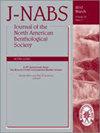Temporal variation of hydrological exchange and hyporheic biogeochemistry in a headwater stream during autumn
引用次数: 26
Abstract
Abstract The hyporheic zone is of great interest for stream ecologists because of its role in stream biogeochemical processing. Our study addresses the effects of leaf-litter inputs and varying discharge on surface–hyporheic water exchange and their possible consequences for the hyporheic zone biogeochemistry. Our study was conducted during autumn in Riera de Santa Fe (northeastern Iberian Peninsula), a stream with a well developed deciduous riparian canopy. We placed 15 wells spaced at 5-m intervals longitudinally down the study reach and measured surface and hyporheic nutrient and dissolved O2 (DO) concentrations on 23 sampling dates (15 during the leaffall period and 8 after a flood that washed out 65% of the accumulated leaf biomass). We assessed changes in surface-water exchange and in hyporheic NH4-N and soluble reactive P (SRP) uptake via coinjection of a conservative tracer and nutrients. Compared to surface water, hyporheic water had lower DO, higher SRP and NO3-N concentrations, and similar NH4-N concentration. Hyporheic water had higher DO saturation (p = 0.00) and higher NH4-N concentration (p = 0.00) in downwelling than in upwelling wells, whereas SRP and NO3-N concentrations did not differ significantly between well types (p > 0.05). Hydrologic connectivity was higher in downwelling than in upwelling wells and decreased with leaf-litter accumulation in the stream channel and increased with stream discharge. Increased connectivity after a flood reduced the difference in DO between surface and hyporheic compartments in upwelling and downwelling wells and in NO3-N in upwelling wells. NH4-N and SRP uptake responded differently to these changes. Hyporheic SRP uptake rate was controlled by hyporheic SRP concentration, which did not vary with changes in connectivity, whereas NH4-N uptake rate was indirectly affected by changes in connectivity through the influence of connectivity on DO availability. Last, although no NO3-N was added during the solute injections, we observed an increase in hyporheic NO3-N that probably was caused by nitrification. Together these results illustrate how the combination of stream hydrology and organic matter accumulation can dictate seasonal changes in hyporheic biogeochemistry.秋季源流水文交换和潜流生物地球化学的时间变化
潜流带在河流生物地球化学过程中起着重要的作用,引起了河流生态学家的极大兴趣。本研究探讨了凋落叶输入和不同排放对地表潜水交换的影响及其对潜水带生物地球化学的可能影响。我们的研究是在秋季在Riera de Santa Fe(伊比利亚半岛东北部)进行的,这是一条具有良好发育的落叶河岸树冠的河流。我们在研究河段纵向以5米间隔放置了15口井,并在23个采样日期(15个在叶片期,8个在洪水冲走65%的累积叶片生物量之后)测量了地表和地下营养物质和溶解氧(DO)的浓度。我们通过联合注射一种保守示踪剂和营养物来评估地表水交换、低渗NH4-N和可溶性反应性磷(SRP)摄取的变化。与地表水相比,低渗水的DO较低,SRP和NO3-N浓度较高,NH4-N浓度相近。下潜井的DO饱和度(p = 0.00)和NH4-N浓度(p = 0.00)高于上升井,而SRP和NO3-N浓度在不同井型间差异不显著(p > 0.05)。水文连通性随河道中枯叶枯落物的积累而降低,随河道流量的增加而增加。洪水后连通性的增加减少了上升流井和下升流井中地表和地下隔室之间的DO差异以及上升流井中NO3-N的差异。NH4-N和SRP摄取对这些变化的反应不同。而NH4-N的摄取速率则通过连通性对DO有效性的影响而间接受到连通性变化的影响。最后,虽然在溶质注入过程中没有添加NO3-N,但我们观察到低渗NO3-N的增加,这可能是由硝化作用引起的。综上所述,这些结果说明了河流水文和有机质积累的结合如何决定了潜流生物地球化学的季节变化。
本文章由计算机程序翻译,如有差异,请以英文原文为准。
求助全文
约1分钟内获得全文
求助全文

 求助内容:
求助内容: 应助结果提醒方式:
应助结果提醒方式:


